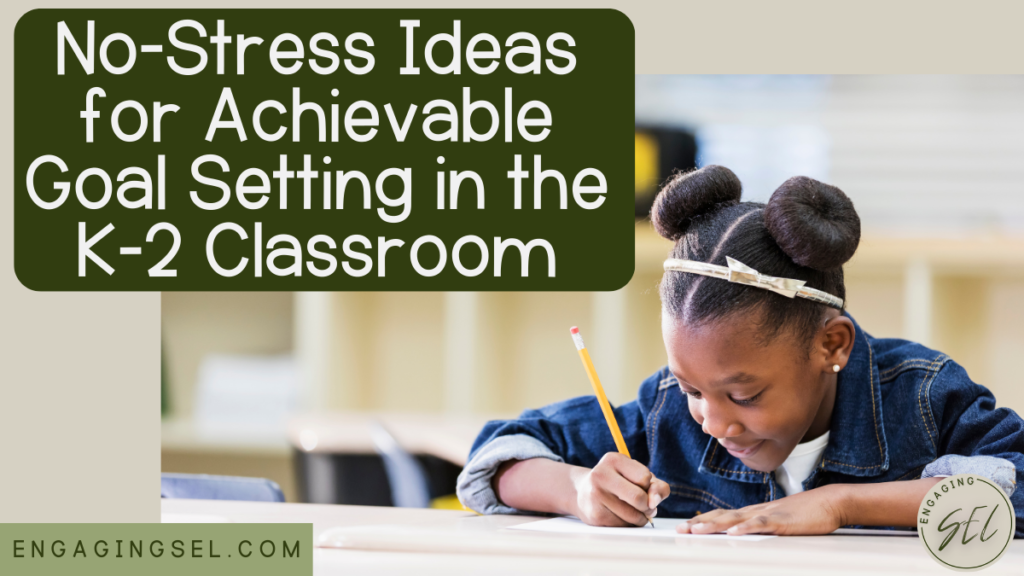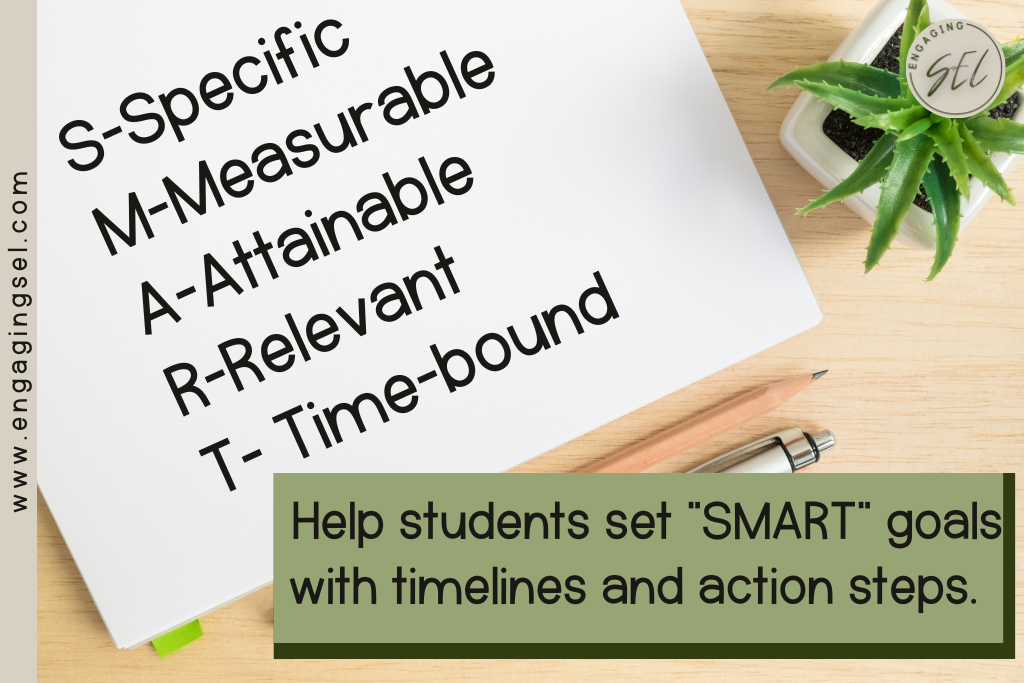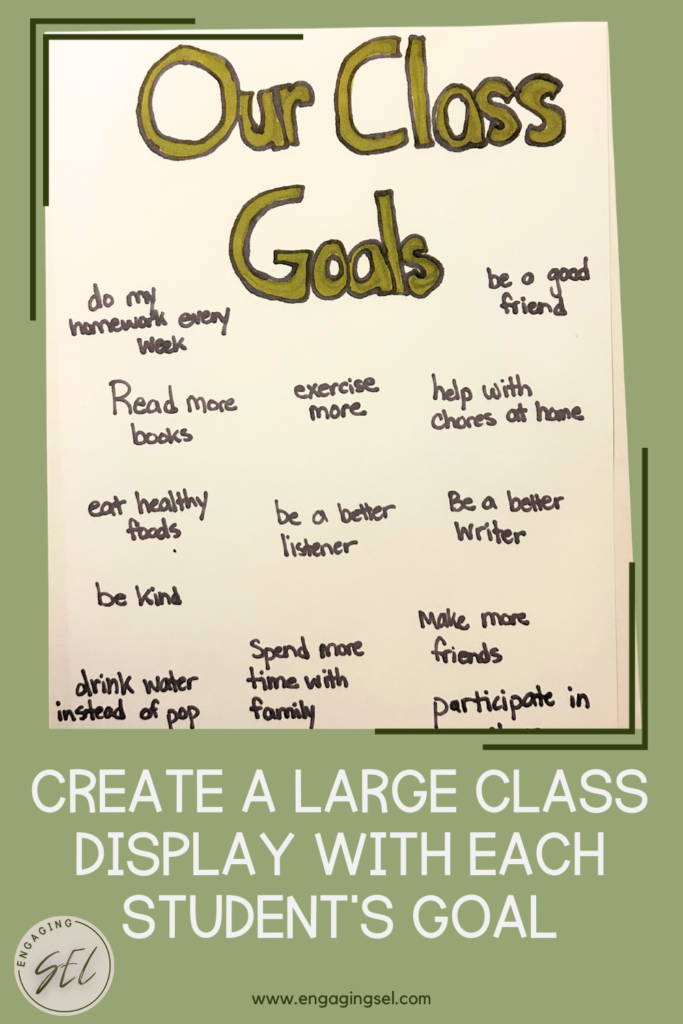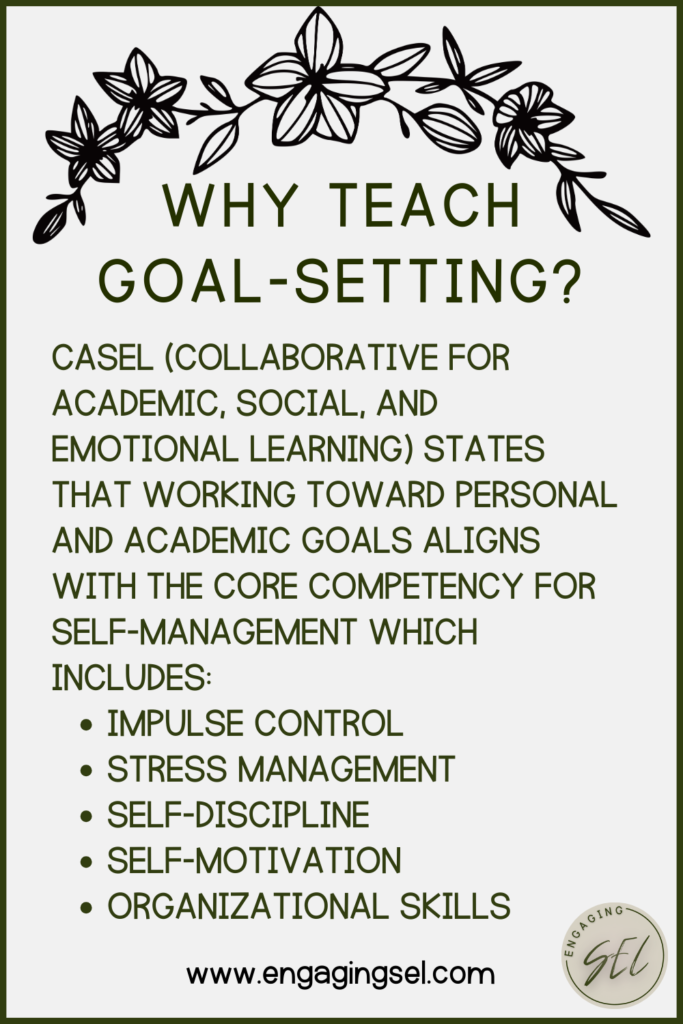
The New Year brings an opportunity for new growth and self-improvement. Adults worldwide ring in the new year by setting goals and making resolutions to help them become the best versions of themselves and your students can too! CASEL (Collaborative for Academic, Social, and Emotional Learning) states that working toward personal and academic goals aligns with the core competency for Self-Management which includes:
- Impulse control
- Stress management
- Self-discipline
- Self-motivation
- Organizational skills
Goal setting in the classroom is more than just a fun activity to do to welcome the new year in the classroom. Goal-setting at a young age sets students up for lifetime achievement and success.
The Importance of Goal-Setting for Young Students
No matter how young or old, everyone can benefit from setting goals and achieving them. Setting goals with elementary students may look a bit different from what it might look like in a middle school or high school classroom, but it is no less important. Students need to be exposed to the idea of setting goals and achieving them at an early age. Younger students need repetition, concrete models and visuals, and multiple discussions to understand the concept of setting goals. Taking the time to discuss what goals are and why they are important leads to lifelong benefits for young students.

Develops Responsibility
When students take the time to create personal goals that they want to achieve, in school or at home, they understand that they are responsible for following their action steps to achieve their goals. It is something they have to do that no one else can do for them. Students learn to take responsibility for their actions and their progress toward their goals.
Boosts Self-Esteem
Setting goals that students can achieve is a great way to boost student’s self-efficacy and confidence. When students reach the goals they set, they become more motivated and determined in the classroom.
Enhance Focus
When we help students create goals in the classroom, we have them focus on specific tasks and action steps to achieve their goals. This narrows their focus by having them concentrate on one thing.
Nurture Life Skills
Students use a variety of life skills when they are working on setting and achieving goals. That can include planning, organization, time management, persistence, and resilience. When students face obstacles on their path to reaching their goals, they learn problem-solving skills and critical thinking skills. The process of setting and achieving goals helps students practice these valuable life skills in a meaningful way and will set them up for success later in life.
Encourage Self-Awareness
Students must examine their strengths and areas of growth when choosing a goal they want to achieve. Reflecting on the progress made toward achieving the goals they set encourages self-awareness in students.
Foster Growth Mindset
A growth mindset is the idea that new skills can be learned, challenges can be overcome and abilities can be developed through hard work and resilience. Setting goals supports the idea of a growth mindset in children.
How to Set Goals with Young Students
Introducing goal setting to young students will require explicit instruction, repetition, and hands-on activities. Like every new concept, I love introducing my students to the idea using read-aloud. Click here for my list of read-alouds for goal setting and making resolutions. Along with read-alouds, I’ve included some tips for teaching lessons about goal setting for elementary students.
Visual
Students need concrete, visual examples and activities to help them understand abstract ideas such as goal setting.l Using charts, posters, or visual aids to represent the idea of goals will help students understand the concept. Creating progress charts or trackers to help them visualize their progress toward achieving their goals can be helpful as well.
Small Achievable Tasks
Students at this age might have difficulties understanding how to achieve large goals. Maybe they want to become better readers or learn to play a new sport. Help students with breaking up those goals into smaller tasks that are more achievable. The Responsive Classroom has some great tips for helping students set achievable goals. Maybe they can spend 10 minutes reading with an adult every night or practice their sport 30 minutes a week. Work with the students to create a goal that is realistic and doable.
Personal
Brainstorm goals that are based on student’s interests. Whether you are creating academic goals or goals for the home, they should revolve around the specific student; ‘s interests. You can create a class anchor chart, have students partner up to share their goals, or work with each student individually to come up with a goal that is specific to each student. When students are personally invested in their goals, they are more likely to put in the work to achieve them.
SMART
If you are in the world of education, I do not doubt that you have heard of a SMART goal by now, and for good reason. When creating a goal, for a child or an adult, it is important to make sure the goals are SMART. Each goal should be Specific, Measurable, Actionable/Attainable, Realistic, and Timely. I’ve also heard of SMARTER (Specific, Measurable, Achievable, Relevant, Evaluate, Reward) or SMARTIE ( Specific, Measurable, Achievable, Time-bound, Inclusive, and Equitable) goals. Whichever acronym you choose to follow, work with your students on creating goals that fall within those guidelines. Students will need help with creating timelines and action steps to follow to achieve their goals. You can ask clarifying questions such as
- What will it look like when you have met your goal?
- What do you need to do every day to reach your goal?
- When do you want to meet your goal?

Encourage Reflection
Students will need to be able to regularly check their progress toward their goals to keep them motivated and on track. If your student’s goals are academic, you can display the student’s goals in the classroom as well as a way for students to track their progress toward their goals. Class goals can be displayed and checked daily for younger students. If it is a reading goal, students can earn a sticker for every book they read and keep track on a class chart. Older students can have a tracker on their desks or in a take-home folder that they can monitor every day. The options are endless.
Celebrate Success
There are so many ways to reward students for reaching their goals. Use whatever system works best for you. I prefer using intrinsic motivation and praise in my classroom instead of candy or prizes, but do whatever fits your classroom culture. If you are celebrating a class goal, a class reward such as a pizza party or dance party might be appropriate. Individual student goals can be celebrated in many ways. You can decide on the reward for the student or have the students choose their reward.
Classroom Activities Centered Around Goal Setting
Goal Collage/ Vision Board
Creating a goal collage or a vision board is an activity that works for all ages and also doubles as an art project. Once students have decided on the goal they would like to achieve, have students create a board with images or words that represent their goal. Collect some old magazines and have students cut out pictures or words that they would like to include on their board or poster. You can include the year in the middle of you are having students create New Year’s resolutions. When the students are finished, they can be laminated and displayed in the classroom to remind students of what they want to achieve. If students feel comfortable, they can share with others about what they included on their board and why.
Goal Artwork
There are so many ideas for crafts involving goal setting. Getting students involved in a hands-on activity related to their goals also gets them motivated and excited to achieve their goals. Use these ideas for art-inspired goal-setting crafts
- Self-portrait goal setting- students draw a self-portrait with their goals on paper. Click this link for step-by-step instructions from Art Projects for Kids
- Goal Mandalas-students can create a mandala with each section representing a step to a large goal or individual goals. Students can decorate the mandala with their favorite colors
- Goal jar/ box- students can decorate a jar or box for their goals and write or draw their goals on paper to put into the box.
- Goal setting pennants-students can decorate their pennant with their goal and display the pennants around the classroom
Class Display
Students can work together to create a large class display with all of their goals. Students can make a mural with each of their goals represented by artwork. Students can write down each of their goals individually to create a large poster or decoration. Create a bulletin board or door decoration featuring each student’s goal.

One-Word Goal Setting
Have each student brainstorm one word that they want to use as their inspiration for the new year or new school year. You can also choose to have one word for the class. Students can write their words and decorate them to display in the classroom or somewhere that is visible daily to remind them of their goals.

There are so many ways to introduce and teach goal-setting to elementary students. The benefits of introducing goal setting at a young age are numerous. Teach students life skills such as planning, responsibility, persistence, and time management that they will use throughout their school career and for the rest of their lives. I hope this blog post has given you some great ideas that you can use to start setting goals with your young students.
Mindfully yours,
Alyssa from Engaging SEL


